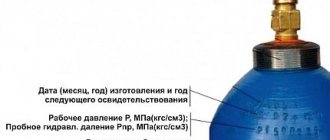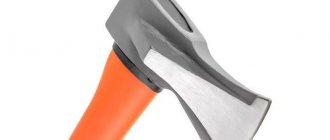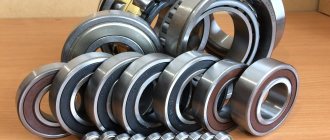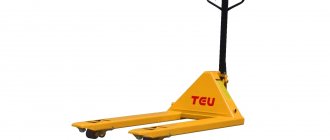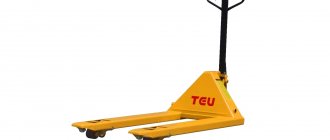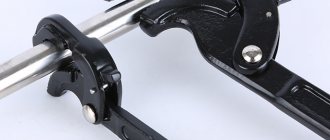Hands from the right place | 01/16/2016
Representing an improved version of the adjustable wrench, the gas wrench, or as it is also called, the pipe wrench, is designed to work with pipes, as well as any other parts that need to grip and hold connections without special edges. Often used by professional plumbers. A little less often, but quite regularly, this tool is also used in car services, in production and at home.
Introduction
Many have heard, perhaps even seen, a gas wrench, however, still not everyone knows what it is and why the tool is needed. Around the subject, there are several stories of word formation and the development of functionality, which sometimes even the most experienced craftsmen are not aware of.
Let's take a look and find out what a gas wrench is, dimensions by numbers. Let's find out the main pros and cons of the tool, the average cost and how to determine quality.
History of origin
To catch the moment of creation of the first prototype, you need to go back to the end of the 15th century, to Sweden. At that time, the tool was called a wrench because of its purpose. It was rarely used, its development took a long time. The only company involved in production and distribution was Mauser.
The production was small and was not successful for a long time. The improvement of the tool was progressing in small steps; different people were working on this issue, practically throughout Europe.
Only 50 years later, Swedish engineers made the next breakthrough, after which they began to call them Swedish. After the breakthrough, more and more hardware and engineering firms began to engage in this industry.
At the time of the production boom, various analogues began to appear on the market. They differed in shape, size, type, and number. Everything went on for a long time until the world calmed down and two common measurement systems were officially approved, namely, inch and metric.
Coincidentally, the gas industry began to develop. To set up and install equipment, they began to use Swedish keys, which even then were popularly called Swedish keys. Soon, gas industry workers received a completely new model, which had not teeth, but jaws.
The new item was almost immediately painted red, because it was the most important tool in the work, and there was a need to find it among the other tools at any time. Almost immediately it was dubbed gas. In turn, plumbers called it either Swedish or pipe.
High-quality tools from the TBS company
Do you want to buy plumbing keys in Moscow, St. Petersburg and Novosibirsk on favorable terms and with delivery to the office, production or site? Contact the TBS online store. We offer high-quality products from the world's leading manufacturers RIDGID and REMS at affordable prices with courier delivery in cities where we operate and dispatch by transport companies throughout Russia.
Do you need advice on choosing and purchasing pipe wrenches? Call the TBS hotline +7 or online chat.
Source
Types of gas keys
Throughout its difficult history, an incalculable number of different variations, modifications, and so on have been created. Only the laziest did not contribute to the development and did not create their own unique look.
When the wild popularity of the instrument passed, only the best incarnations began to enter the market, and some models were produced and used only in a certain country. They had their own names and divisions by size, but we will discuss this later. Currently the following types are used in the world:
- chain;
- with gripping or self-capturing;
- core or drill;
- Swedish, gas or lever;
- pipe, plumbing or adjustable;
- tongue and groove
If we talk about popularity, then in the European Union the lever gas model, which was created here, was and still is the most popular. In the New World, the most commonly used type was the adjustable pipe.
And only some countries, like Russia, Belarus, Portugal, and so on, used both options. The rest were already narrow-profile, they were used only in certain situations and for special work, which is why they did not become so popular.
If we talk about the external difference, it lies in the design and principle of operation. If we take a lever, then it consists of two separate levers, which are flexible at the ends, and are connected by a hinge system.
It operates on the principle of spreading the handles and bringing the jaws under the part. And if you take an adjustable one, then it’s much simpler: one handle with one jaw, and the second jaw is attached to a special thread. It works by unwinding the mechanism and adjusting the distance between the jaws to the part.
Video: About the varieties of Swedes
KTR components and materials
Lever gas pipe of the most common design with two handles consists of a movable and fixed lever, combined into a durable functionality using a drive part. The principle of operation of such a lever wrench is to jam the pipe between the jaws. The working position is when the jaws are at opposite ends of the diameter and compress it like jaws.
The key is based on a fixed lever made of a steel strip. It can also be made from a piece of trough-shaped curved sheet steel. A leash is attached to it on hinges. A movable lever with a large thread is threaded into the leash, the curved end of which is also equipped with teeth. A thrust nut is screwed onto it, with the help of which the required throat solution is set.
A pipe spanner consists of a lever with teeth at the end, threaded through an adjusting nut. To which a cap bracket with teeth is hingedly attached.
The chain wrench uses a chain as a gripper and a ratchet tension mechanism, which allows the workpiece to be evenly crimped around the entire perimeter.
Self-tightening keys consist of a lever and a folding bracket attached to it with a pin; tightening occurs independently when the handle is rotated.
The key body is solid forged metal. For the manufacture of tools, tool steel or alloys of chromium and vanadium with steel are used. There are products for special work made from other materials. For work at height, wrenches with lightweight handles made of aluminum alloys or polymers are used. This allows you to reduce the weight of the tool by up to 40%.
Key sizes by numbers
So we come to the essence of the article, where the meaning of the words “gas key dimensions by numbers” is explained. The fact is that, both before and now, there are different sizes, but no longer in such a chaotic order, but in a clear and adjustable one.
Now there is a classification of sizes by numbers, which determines its size according to how long the tool is and what range of capabilities it has, relative to the diameter of the part. The sizes are listed in a single table, this is what it looks like:
| № | Length in mm | Range of possibilities (workpiece diameter in mm) |
| 0 | 200 | 5-27 |
| 1 | 300 | 10-35 |
| 2 | 400 | 20-50 |
| 3 | 500 | 20-50 |
| 4 | 650 | 20-65 |
| 5 | 800 | 30-120 |
Advantages and disadvantages
Based on the above, we can say that this tool is not just good, but very good. The same is said by the masters who use this universal key every day in their work.
And such a long history of creating the instrument was not in vain, because it has a number of undeniable advantages. Here is a list of these positive functional features:
- Versatility, namely, the ability to use it for different parts, fasteners, tasks and jobs;
- Easy to use and design, you do not need to have special skills to work with this tool;
- Since it consists of constituent components, damaged parts can be replaced and repaired;
- The shape and principle of operation will allow it to be used in different conditions, even the most inconvenient;
- During use, the thread and the part are fixed, which allows you to carry out work without much effort.
With such a list of advantages, one can call it almost ideal. And this is almost due to its two small shortcomings, which also occur. The fact is that if you choose the wrong size and apply excessive force to a part, pipe, or fastener, then this object may become deformed.
Most adjustable and lever wrenches are very large and will not fit into a general tool case. But these disadvantages pale in comparison to the number of positive aspects of a divorce assistant. In addition, they can be easily resolved: a clear selection of the key size, special belt fasteners and tool cases.
Straight pipe wrench
This type of pipe wrench is the simplest and most common wrench. It is used if it is necessary to perform work in which pipes have edges.
Thanks to the jaws located at 90 degrees relative to the handle, you can grab objects from both sides. It is possible to adjust the grip width using a nut. A straight pipe wrench has a low price in modern markets, but you should pay attention to the manufacturer so as not to purchase a low-quality tool.
Prices and quality of gas keys
After the strengths and weaknesses of the assistant have been sorted out, it’s time to talk about the most important thing, namely the price. And here the scatter can be even greater than the varieties. It can cost either 500 rubles or more than ten thousand. The fact is that the price is influenced by a number of indicators, namely:
- Tool material;
- Popularity of the brand;
- Build quality;
- Country of manufacture.
The main selection criterion for any person, both beginner and master, will be the frequency of use. The rest will depend on the meaning. If a tool is needed to solve several problems every six months, then there is no point in considering it more expensive than a thousand rubles.
And if you need it for professional and permanent work, then you need to take a more serious approach to choosing an assistant, because a cheap model will not last long, and repairing it will be problematic. In order not to make a mistake with quality, it is better to purchase tools in branded stores of popular manufacturers, where the best materials are used and warranty service is available.
General rules for using wrenches.
To avoid damaging the part you are securing the joint with and injuring yourself, always select a wrench that is the right size for the nut or bolt head you are tightening or loosening. Make sure the jaws of the nut tool are firmly seated on the fastener before applying force. If you take them into account, the key will not fall off, and if it does, you will not have to swear because of abrasions.
When using a wrench, it is better to use a pulling rather than a pushing motion (see picture on the left), and you will generally find it easier to position yourself to pull rather than push. This ensures that you won't have your fist cut off if the tool comes off. If you have to push, use the heel of your palm so that even if the key comes off, you won't get hurt.
Do not lengthen the lever arm
with a tube, use a longer wrench. You may have seen your dad put on a long piece of pipe to lengthen the lever arm and tighten the fastener tighter. Avoid using "extensions".
First, they can damage the key by bending the handle or bending the head.

